In 1864, prospectors found gold in the caldera of a long extinct volcano in the Cabo de Gata in Almeria province. The gold rush that followed brought ruin for the miners and mining companies.
By Nick Nutter | Updated 11 Apr 2023 | Almería | Places To Go |
Login to add to YOUR Favourites or Read Later
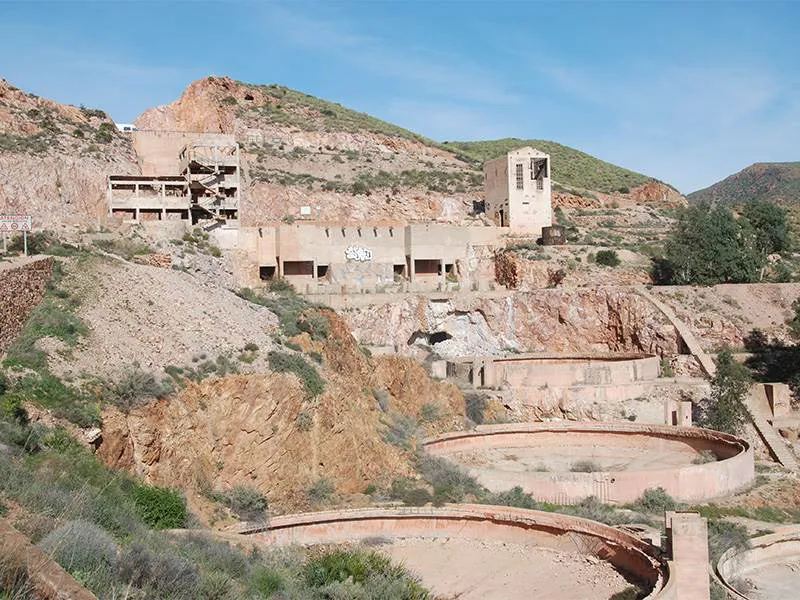
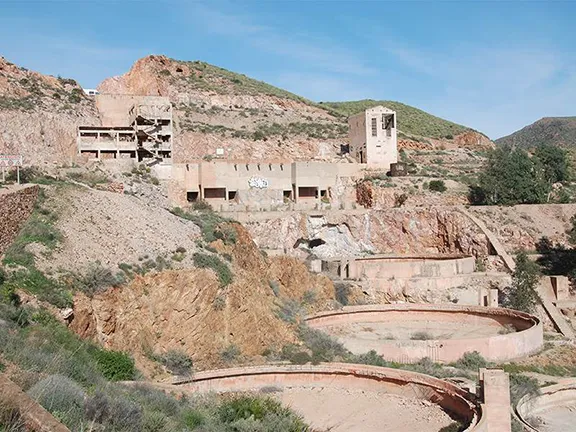
Rodalquilar, a gold mine in Almeria
Before you all rush off to buy pickaxe, shovel, gold pan and a bag of beans allow me to amplify the statement. There is gold but there is nowhere near as much as was once thought and it is difficult to extract and expensive to process. Moreover, the site is within the last semi-arid region in Europe, the Cabo de Gata, and surface fresh water is rare to non-existent. However, those trivial problems were not enough to deter various businesses over the years from coming to Rodalquilar, investing money and going bust with monotonous regularity.
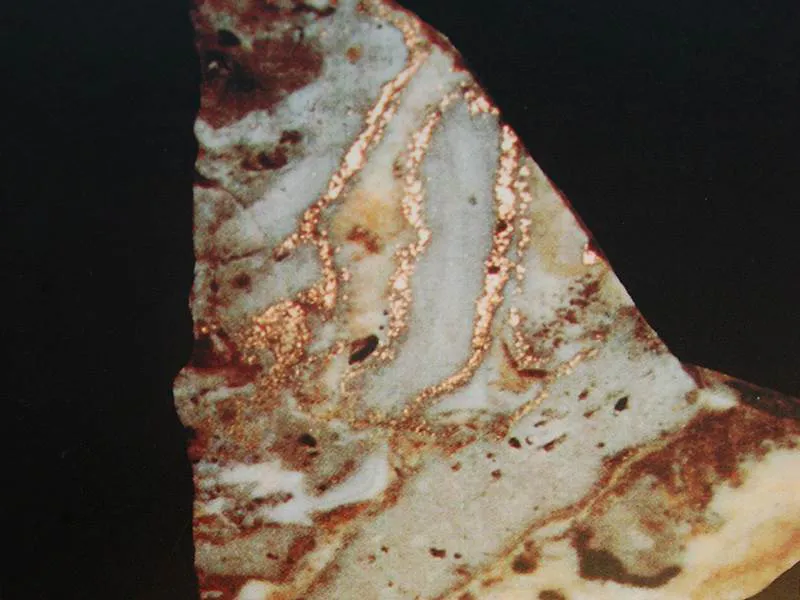
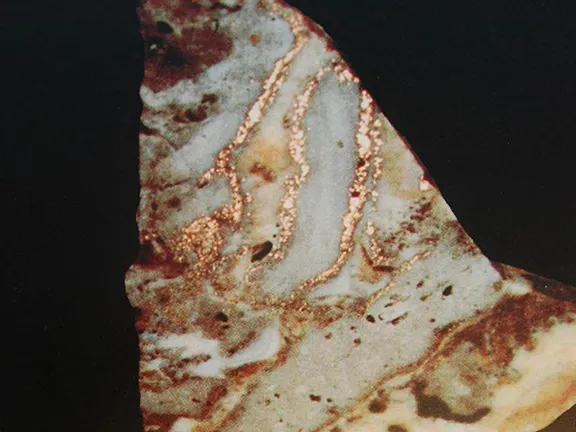
Brecha with native gold
The small town of Rodalquilar is situated in a volcanic zone in South East Spain in Almeria province. Much of the zone is beneath the sea and it continues to expand along the line of a fault called the Carboneras-Serrata Fault. The age of the Cabo de Gata volcanic complex as a whole is known from Potassium/Argon dating of the volcanic rocks. The volcanic activity occurred in cycles over a long period of time, between 15 and 7.5 million years ago. Rodalquilar sits in the centre of an oval-shaped caldera with a diameter of 8 kilometres from east to west and 4 kilometres north to south that was formed about 11 million years ago when the magma chamber beneath a volcano collapsed ejecting about one cubic kilometre of igneous material. This is a relatively small collapse, there have been some over the last 4 billion years where the ejected material has been as much as one thousand cubic kilometres.
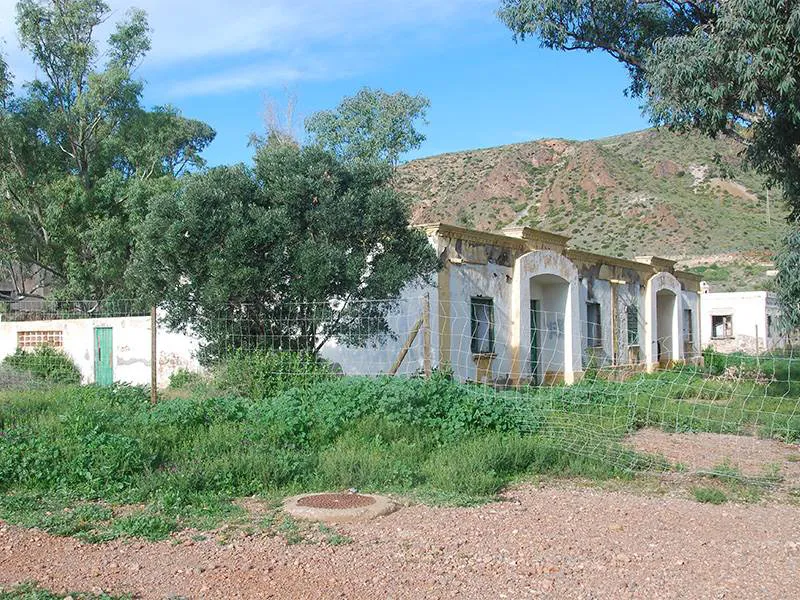
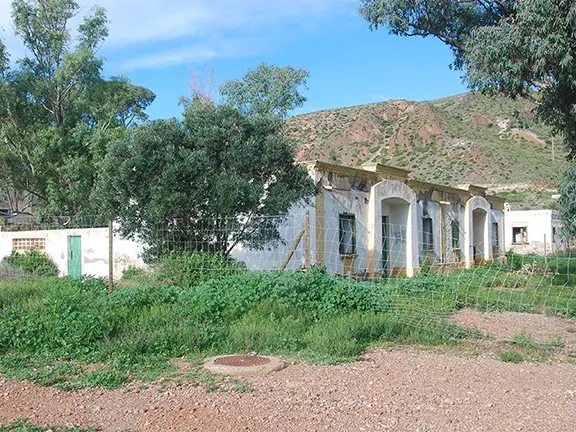
Abandoned miners houses Rodalquilar
The igneous material contains various minerals concentrated in veins in fissures. Those minerals arrived there as a result of hydrothermal processes. After the magma chamber collapsed the remaining magma was trapped a few kilometres beneath the surface. This magma heated the surrounding rock to between 400 and 500 degrees Celsius. The magma also released acidic gases and fluids, primarily hydrochloric and sulphuric. These fluids, under immense pressure, were forced up through the rock dissolving minerals from the rock as they went. As they neared the surface they encountered water either from subterranean sources or of marine origin. This further cooled and diluted the acidic fluids and resulted in crystals of the minerals being carried by the fluids precipitating out in fissures and fractures. The remaining gases reached the surface in two places, a fumarole called Cinto and one called Los Tolles, both in the Rodalquilar caldera. The minerals deposited about 10.4 million years ago included gold.
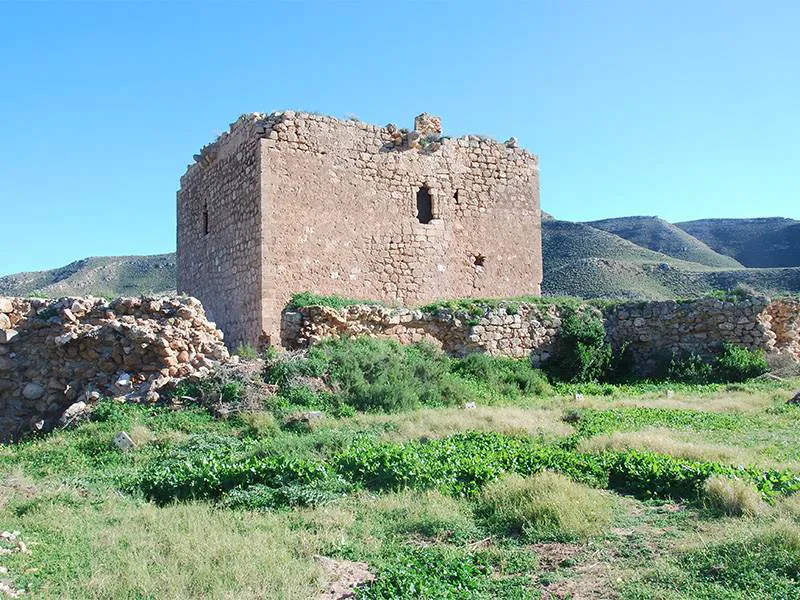
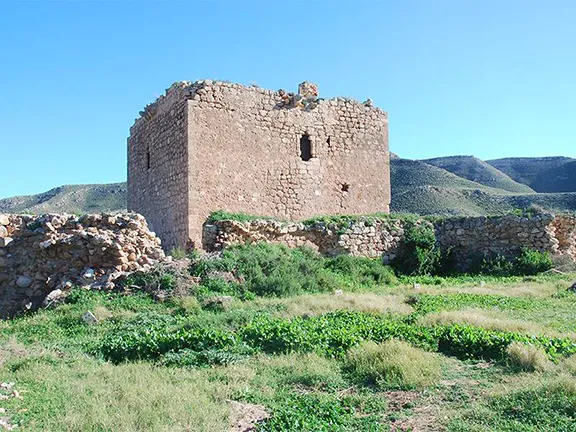
Torre de los Alumbres, Playozo beach, Rodalquilar
And there they remained until 1864 when gold was discovered at three locations, the sites of ‘Las Ninas’, ‘Rondo y el Resto’ and ‘Consulta’ mines, all in the vicinity of a Cortijo called ‘El Estanquillo’ that later became the site of Rodalquilar village. When word got out there was a mini gold rush but the prospective miners found that the silica rock was especially hard and abrasive and that the gold was not present in huge concentrations being mixed with other metals, mainly lead and silver. Gold accounted for only 12 to 25 grams per tonne of ore.
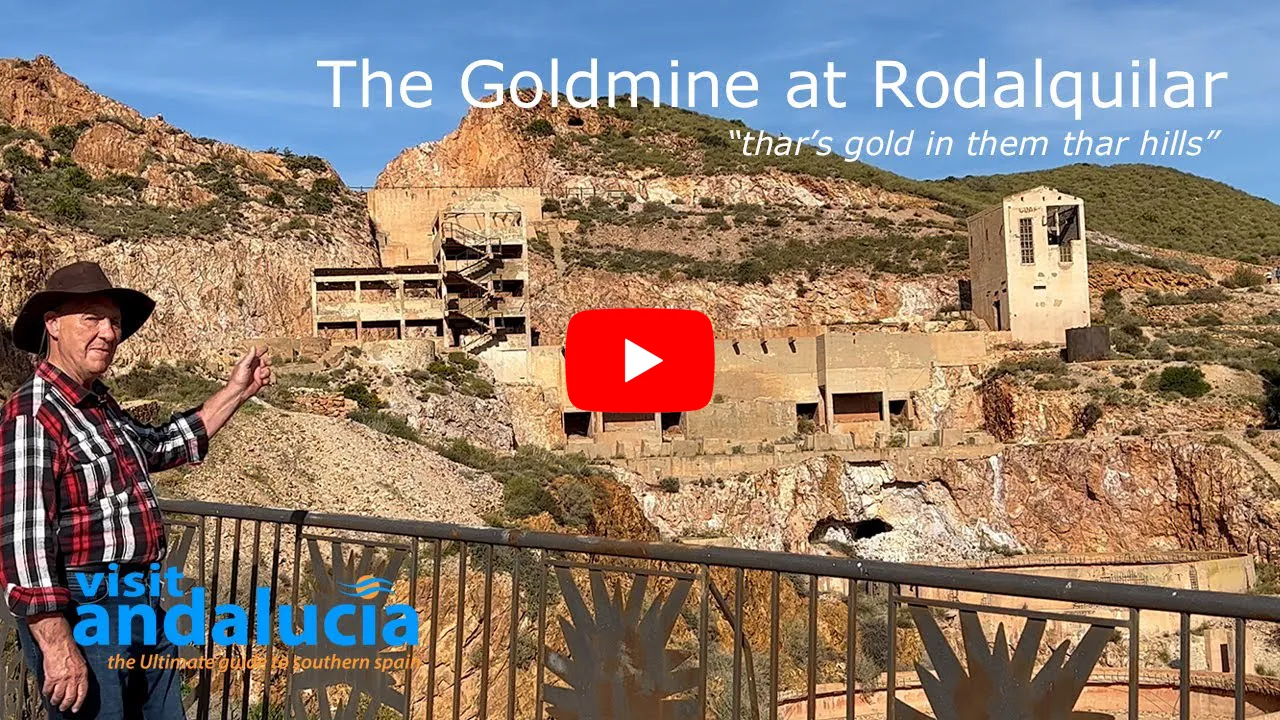
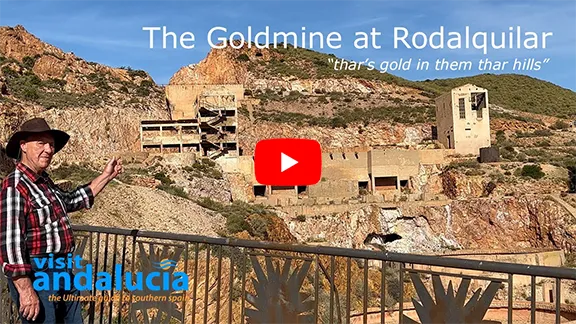
Video By: Julie Evans
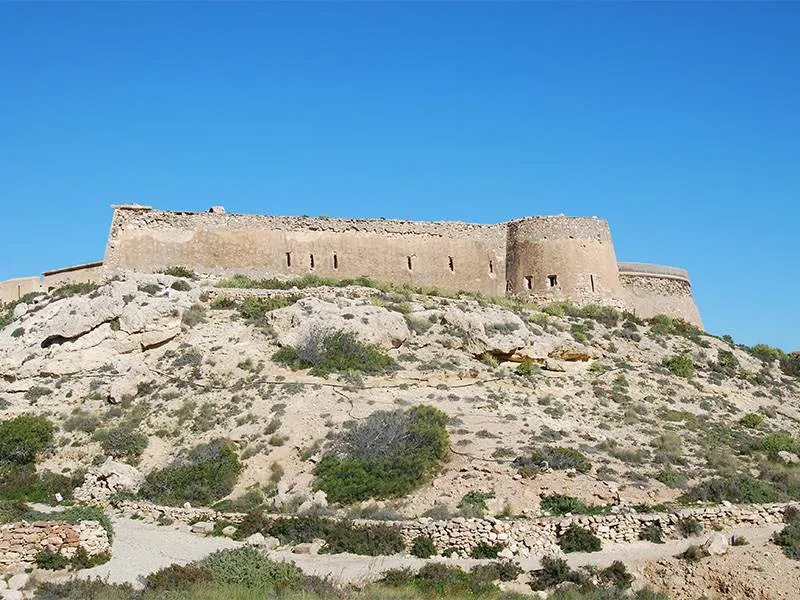
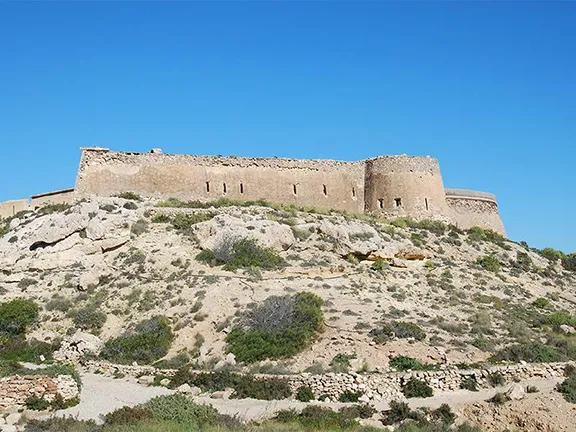
Castillo de San Ramon, Playozo beach, Rodalquilar
Extraction of the ore itself was by the use of explosives and hand tools and the ore was carried out of the mine in esparto baskets where it was loaded onto donkey-drawn carts. It was then taken to the coast at Playazo beach and shipped up to foundries at Puerto de Mazarron and Cartagena.
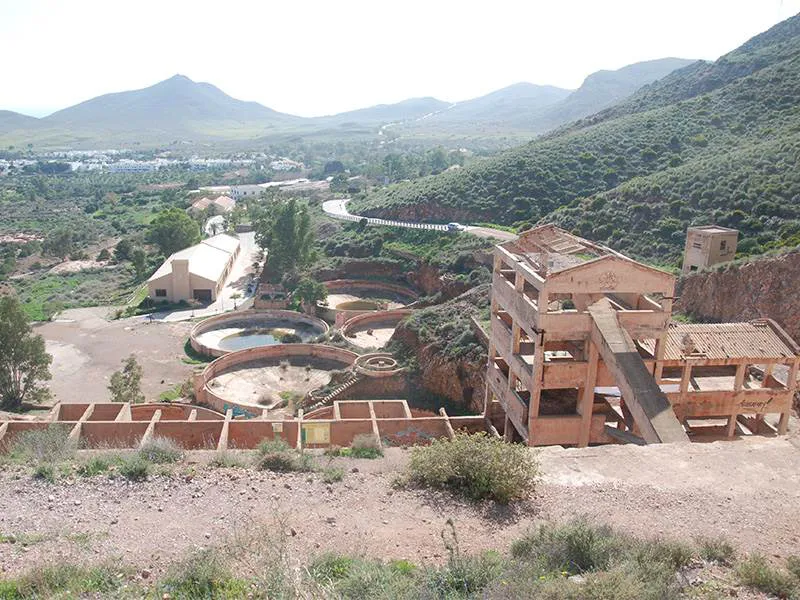
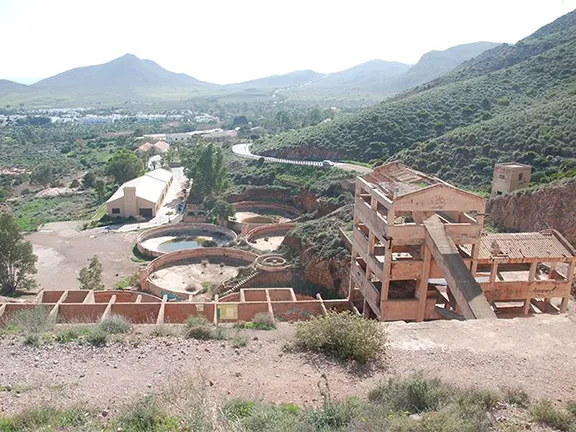
Rodalquilar with Denver plant in foreground
At the foundry lead mixed with gold was extracted and this amalgam was then shipped to Antwerp where it was separated out using a process known as amalgamation that uses highly toxic mercury. Up to 1914 the annual weight of ore extracted averaged about 2,500 tonnes. Interestingly, during this period, the mine owners were only interested in the money they could get for the lead. The value of the gold was assessed at the foundries and the miners themselves received that value in cash, less 25% for transport costs.
In 1915 gold was discovered in free form in the ‘Maria Josefa’ mine and the profits allowed the owners to install an amalgamation plant that opened in 1925. This plant was capable of treating 20 tonnes of ore per day and was operated by the ‘Minas Auriferas de Rodalquilar’. The miners made a crucial error, they heated the ore prior to crushing. If the ore is heated it is easier to crush. However heated ore produces deposits that sit on the surface through which the mercury finds it difficult to penetrate so little gold was extracted. The company failed.
Despite this failure the German company, ‘Krup Grusonwerk’ established ‘Explotaciones y Minas Auriferas de Rodalquilar’ that started operating in 1929 from the ‘California’ mine on the outskirts of Rodalquilar. Still using the amalgamation process this company failed within one year.
In 1930 the British owned company, ‘Minas de Rodalquilar SA’ came to the rescue with new explosives and compressed air drills. They also laid tracks in the mines themselves, apart from in the narrowest sections. The carts could each carry 1 cubic metre of material although in the narrow sections this had to be unloaded, carried by esparto basket to the next cart and reloaded. Once outside the mine, a lorry transported the ore by road to the treatment plant called the ‘Dorr’ plant which was next to the village. This plant used a cyanisation process developed in the late 19th century that, although expensive to set up, is far more efficient than the amalgamation process. For the first time, the Rodalquilar mines were making a handsome profit with an annual extraction rate of 20,000 tonnes of ore per annum with a production rate of about 4 grams per tonne.
It is not surprising then that at the outbreak of the Civil War, in 1936, the mines were seized by the sindicalists, the Spanish equivalent of trade unionists and at the end of the war, in 1943, by the state. The state-owned National Industrial Institute subsidiary Adaro ran the Dorr plant until 1966. They managed to keep annual extraction rate at 20,000 tonnes. In 1956 the Dorr plant was augmented by a second cyanisation plant called the ‘Denver’ plant. This made the mine the largest in Western Europe. Extraction was raised to 200,000 tonnes per year.
Meanwhile the use of manpower for transporting the ore was reduced and more combustion-engined lorries were introduced. Extraction methods were also improved with water and air compression drills. The extraction of ore in open cast mines also became more efficient with better explosives, developed during the Second World War, air hammers and, in 1956, a wagon drill that could drill down over 10 metres making each blast that much more effective, all helping to meet the annual target of 200,000 tonnes of ore.
Despite all these improvements the mines were not prosperous after 1936. When Adaro took over in 1943 the only client for the gold was the state who fixed the price, there was no free market. Due to political and social factors, the National Industrial Institute seized assets by dubious legal means and generally proved inept at running the business. Finally, the massive annual extraction rate exhausted the mine by 1966.
The mine had a small return to fame in 1986 when it became the location for some of the scenes in a post-apocalyptic film called Solarbabies. The producers were responsible for the lettering still visible on the transformer tower, ‘Guard Block D’ and that on the trituration tower (Dorm Block A).
In 1989 the Dutch firm ‘Cymet’ designed and constructed a gold extraction plant using the latest technology, leaching. This could extract gold from ore with content as low as 1 gram per tonne. It meant that all the ore treated prior to 1966 could be recycled. Production was estimated at 280kg of gold per year from an extraction rate of 200,000 tonnes per year. This effort lasted one year. The gold standard had finished in the 1970s and the mine had to compete in a free market. Competitors such as the Yanacocha mine in Peru had an extraction rate of 350,000 tonnes per day and the small scale effort at Rodalquilar could not compete.
The remains of the mine are open to the public and can be visited at any time. Road signs direct you to the top of the village from where you will see the mine workings. Beneath the mine there is an excellent museum with a scale model of the mine workings in the 1960s, an exhibition of the geological processes that made the Cabo de Gata and a good selection of the minerals found in the Cabo de Gata. The museum is only open Thursday, Friday and Saturday from 10 am until 2 pm.
For information about Mining in the Sierra Almagrera and Las Herrerias